Six steps to attracting the right people for your needs

Effective nonprofit governance is to a large extent a function of having the right people on the board. Most of us know, however, that assembling a qualified, committed, and available membership isn’t easy to accomplish. Over half of respondents to our 2021 Board Governance Survey (with VAFCC) said recruiting was one of their most significant challenges, citing limited local candidate pools, competition among nonprofits in their communities, and the perceived weight of participation requirements as some of the most difficult obstacles to overcome. More than a few boards find themselves reacting to these conditions by accepting simply because they are willing to join—without evaluating the entire package against their needs. How this works out is anyone’s guess and, quite frequently, it doesn’t go well.
Despite the difficulties, though, it is entirely possible for most clinics to build an effective board by following some fundamental tenets of recruiting. Here are six things boards can do.
1. Define the key attributes of the right members.
To get the people they need, boards have to know who they’re looking for—the characteristics of people who can fill critical gaps and be positive, productive members. It may sound intuitive, but just 40% of our survey respondents reported taking a clear, consistent approach to defining skills and associated experiences. Those that aren’t doing it need to start, but it’s also not enough. It doesn’t matter how much knowledge someone brings if they’re unavailable, unmotivated, unproductive, or a poor “fit.” People have their personal and professional objectives, interests, values, attitudes, and competing priorities. Boards need to define the context-specific details of traits beyond just knowledge and experience that an individual needs to be a strong contributor.
2. Put someone in charge of the board recruiting process.
It’s essential to have a single person or group responsible for board recruiting. Too frequently, boards take a decentralized approach, counting solely on existing members to identify and refer potential candidates. While “word of mouth” is certainly helpful in the recruiting process, depending on an “all hands” construct is often at the expense of developing and implementing strategies to reach broader audiences (see #4, below). It also deprives boards of consistent vetting and nominating processes, which help assure those selected will in fact “fit” with what the board needs. Committees are particularly useful here, as members can share the burden while maintaining the integrity and consistency of outreach efforts as well as procedures to evaluate new prospects.
3. Articulate the “value proposition” of the opportunity.
It’s easy to forget that recruiting is a two-way conversation. It’s not just about candidates presenting their credentials and intangibles, but also organizations to describing how prospects will benefit from working with them. Nonprofit boards often lament how difficult it is to recruit people who can meet their expectations for participation, “give or get,” etc. as unpaid volunteers with competing responsibilities. One key is to tell them the value they’ll get can advance their interests, and tell them exactly how. Compelling “offers” are critical to outcompeting other nonprofits in the area. Remember, though, that attracting the right people, requires the mission to be the primary focus above, for example, professional aspirations that may also be accommodated.
4. Create a comprehensive, targeted recruiting strategy.
Even after defining their target compositions, many boards rely heavily on referrals and members’ relationships to fill seats. This can generate some good candidates. It’s also unnecessarily limiting. Informed recruiting strategies, just as non-profits should have for open positions in the workforce, broaden boards’ horizons because they can find more sources and approach groups with tailored messaging. Going where people with the desired experiences “hang out” and effectively conveying both what the nonprofit is looking for and the value proposition for prospective candidates creates deeper, richer candidate pools. From local business groups to social media, there are many options to consider. Find where the right people are, and tell them the right stories.
5. Be clear and honest about board member expectations.
Part of being the right person for a board is an individual’s ability and willingness to meet board requirements. Boards are often shy about telling candidates those expectations up front, however. This is understandable. They don’t want to scare otherwise interested, good people away. But delaying the discussion of expectations until later isn’t the right approach for anyone, for three reasons: (1) People who can’t meet requirements don’t have an opportunity to “self-select out,” (2) Boards can only guess whether new members will meet the commitments they’re unaware they’ve agreed to, and (3) It’s just unfair to lay out participation, financial, and other expectations after the fact. There’s no need for boards to hide what they want, and they’ll get better members for it.
6. Thoroughly evaluate interested candidates.
When people say “yes”, it’s tempting to accept them on the spot—after all, members are hard to find. However, it’s better not to fill an open seat than to fill it with the wrong candidate. If they’ve followed a sound recruiting process to this point, boards will know the characteristics of the right people—skills, relationships, intangibles, etc.—and they’ll have candidates who purport to have them. Some things, such as experience, can be easily assessed, but other traits are harder to see at first glance. They are no less important and need to be probed. Interviews by multiple board members, with purposefully developed, well-structured questions, scenarios, etc. are critical. Both personal and professional reference checks should also be done before approving someone.
Board recruiting is challenging for any nonprofit, whether large or small, urban or rural. There are no “magic bullets,” but there are ways to increase the chances of attracting and securing the right people for the need. While connections are great, don’t be limited to who your current board members know. Follow the process—from identifying needs to evaluating candidates—and you’ll get the right people.
Post Author
Tom Morley - Managing Director, Snowflake Consulting
More Information
Contact Tom or
NANSV for more information.
SHARE THIS POST











